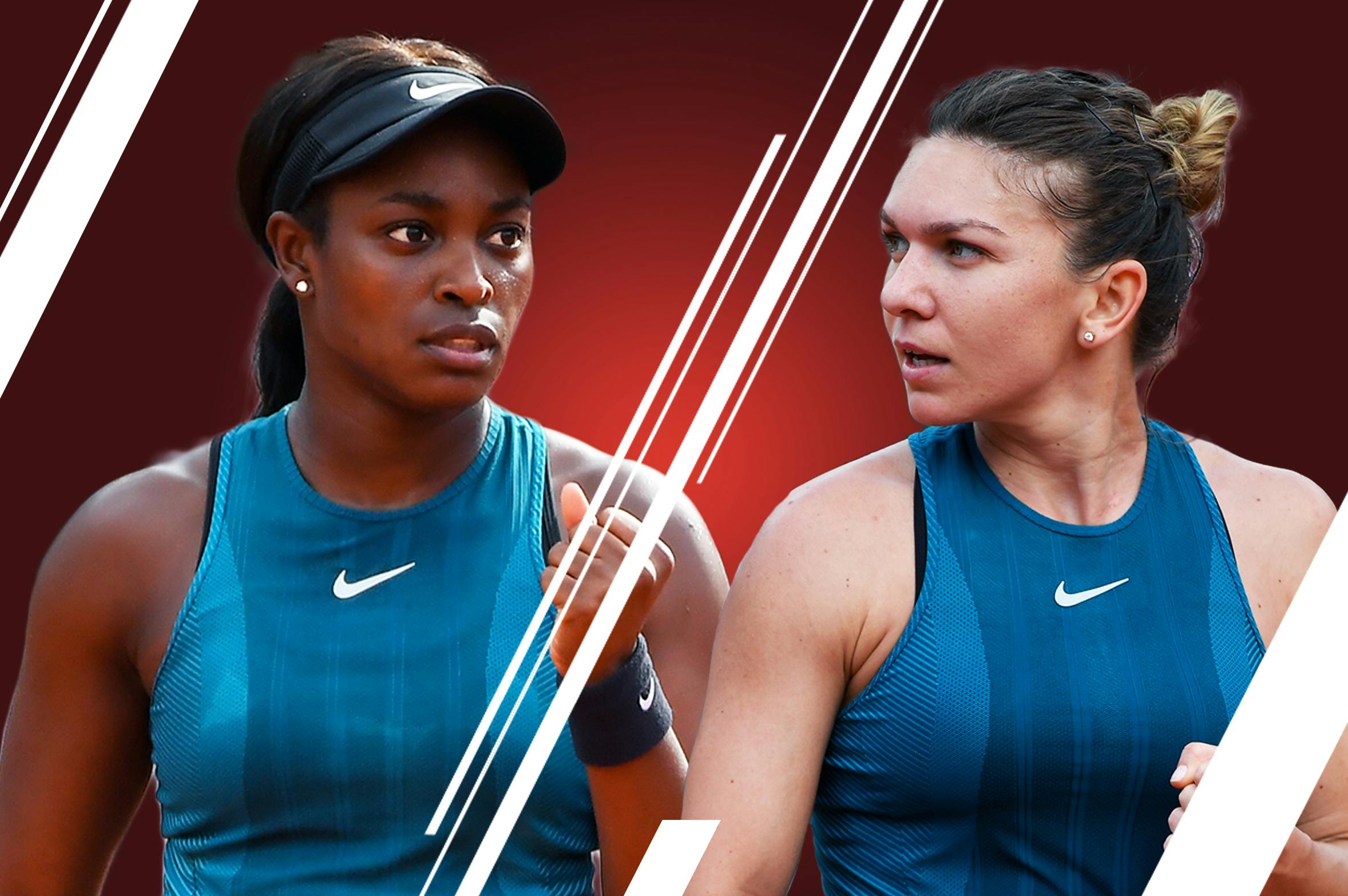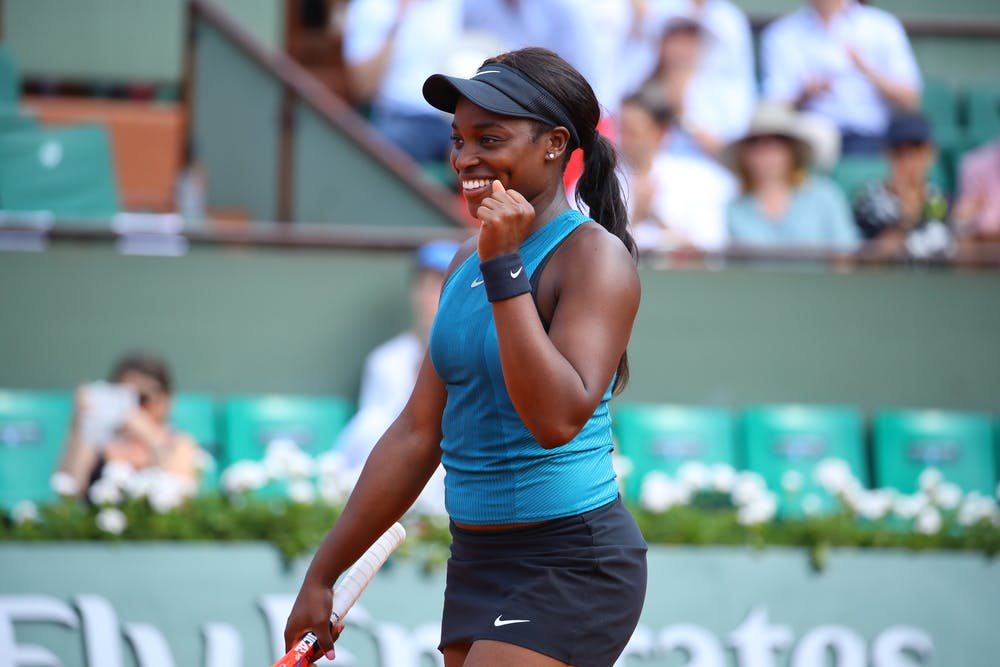Read more
Halep's time, or a Stephens stunner?

Eleven months ago the American was No.957 in the world. Now the US Open champ is chasing her second major in Paris.

"There are no words to describe how I got here, the process it took or anything, because if you told someone this story, they'd be, like, that's insane."
So said Sloane Stephens after she won the US Open in 2017. The 25-year-old American’s first Roland-Garros final falls just nine months later almost to the day – and the crutches-to-champion story remains pretty incroyable. Regaining the opportunity to prove herself a special talent on a tennis court has given her a freedom to go out and compete, nothing more, nothing less. On court, she looks effortless. In attitude, she is uncomplicated.
Venus Williams once suggested that sport is a microcosm of life. “It shows the human spirit, fighting against all odds,” she said. “Great champions come back from injuries or circumstances they could never have planned for. It’s very encouraging for people to watch. You never know whose life you’ll touch just by being your best.”
Who can forget Sloane Stephens’s Cinderella story of 2017? After injuring her left foot at Wimbledon in 2016, Stephens went to the Rio Olympics only to withdraw when further play exacerbated the stress fracture. In agony, she withdrew from all tournaments and wore a walking medical boot.
The pain did not relent. In fact, it got worse, and on January 23 2017 she had surgery, not knowing if she would ever play again. After watching the Australian Open from her sofa with her leg in a bulky cast, she became Tennis Channel's reporter-at-large, interviewing her peers, resigned to the thought that this level of involvement with tennis might be a permanent career option.
Months later she eased back into training and got the thumbs-up to return to competition. Wimbledon was her first tournament back. Entering the main draw with a special ranking, she was knocked out in straight sets in the first round by compatriot Alison Riske, but was thrilled to be back, playing and pain-free.
Roll on a month to the US Open, the unseeded 24-year-old moved steadily, unexpectedly, through the draw, knocking out impressive opponents without fanfare in each round: the 2015 US Open finalist Roberta Vinci, Dominika Cibulkova, Ashleigh Barty, Julia Gorges, Anastasija Sevastova, Venus Williams in the semifinal, and then her great friend Madison Keys in the final. Six weeks after her return from an 11-month absence, ranked 957th in the world, she was a Grand Slam champion. “If someone told me at Wimbledon that I'd win the US Open, I would have said ‘It's absolutely impossible',” she said. “My journey to get here, coming back, just being able to keep it all together and have such a great team behind me—this journey's been incredible. I honestly wouldn't change it for the world."
And here she is again in a Grand Slam final, an unheralded No.10 seed with few external expectations – just the way she likes it. Did that frightening period in limbo give her a new perspective?
“Yeah, definitely,” she said on the eve of her exciting match-up with world No.1 Simona Halep. “After not playing for 11 months, I’ve had some great results. Obviously a lot of hard work went into it, a lot of adversity, a lot of ups and downs, a lot of emotional [questions], like, you know, am I ever going to be the same? Am I ever going to play good again at a high enough level? Am I a protected ranking? There were so many things that went into it.
"And I think now I have matured a little bit and I have recognized opportunities when they have been presented. The most important thing is that I have taken those opportunities and done a lot with them.”
The comeback mindset augments Stephen’s inherent nature. She has always been calm, composed and quietly brimming with self-belief. Remarkably, she has won every single one of the six finals she has reached. Several times in her career she has publicly recalled the moment the directors at a tennis academy told her mother that the 11-year-old Sloane was only ever going to develop into a division three college player. “To this day I still think of that,” she says. “It makes me work that much harder.”
“I'm pretty calm on the court all the time, I'd say. I don't get too up, too down. I think that it has helped me in finals. I just stay calm and play my game. This final is another great opportunity, the final of a Slam, so I just gotta go out and compete… Obviously when you have confidence, you can do anything.
“But I think when you're calm and you're relaxed and you don't panic and you stay steady, you allow yourself to work through obstacles and adversity or anything that might happen on the court that you were not prepared for. So, for me, staying calm is the most important thing. And then being able to take advantage of the confidence that you have when you're playing deep into a slam is super key.”